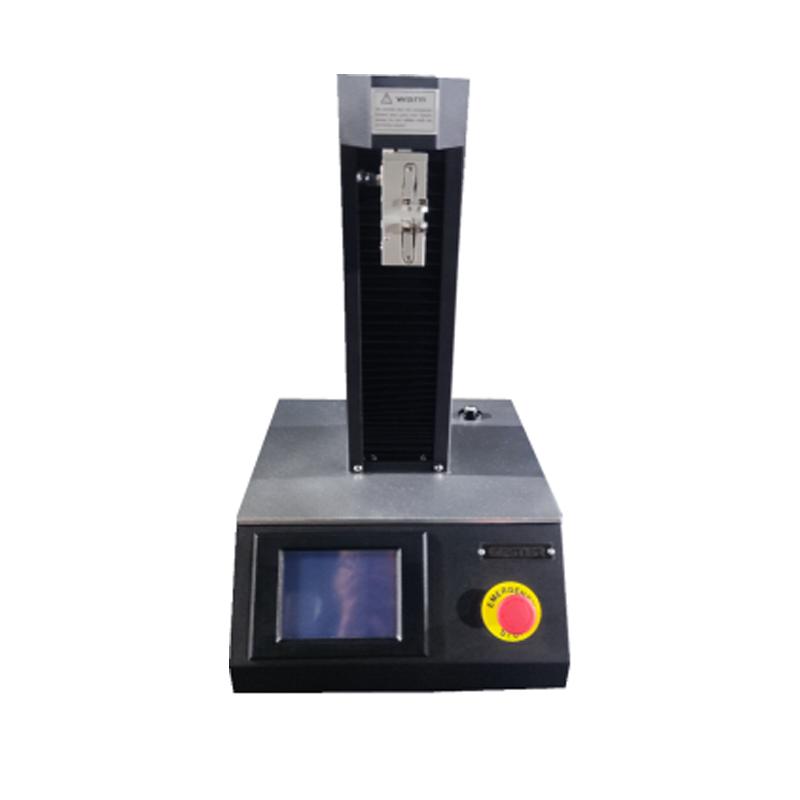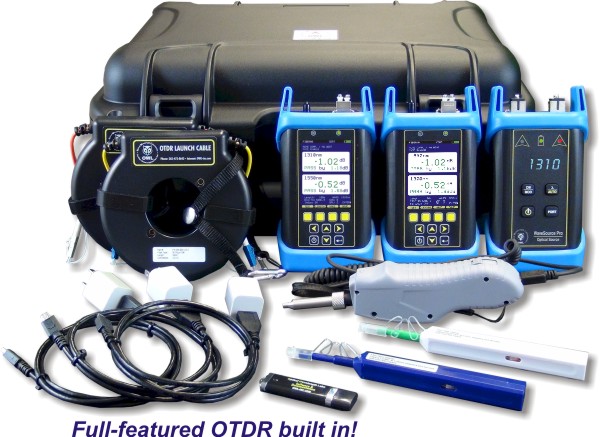A Comprehensive Guide to Optical Measurement System for Fiber Evaluation
When it comes to fiber evaluation, understanding optical dimension systems is crucial for evaluating efficiency and making sure high quality. You'll discover vital strategies like interferometry and spectroscopy, which help you gauge key specifications. But there's more to it than just these approaches; grasping attenuation measurement methods can considerably influence your network's efficiency. As you navigate with this guide, you'll reveal understandings that can transform your approach to fiber optics.
Understanding Optical Measurement Equipments
When you check out optical dimension systems, you'll uncover they're crucial for analyzing fibers with accuracy. These systems make use of light to examine numerous attributes of fibers, including diameter, refractive index, and uniformity. By employing strategies like interferometry and spectroscopy, you can acquire beneficial understandings right into the fiber's properties.You'll locate that these systems are developed to decrease mistakes and enhance accuracy, guaranteeing reputable information for your evaluation. Different setups, such as single-mode and multi-mode systems, provide to particular fiber types, permitting you to pick the finest suitable for your needs.Moreover, the assimilation of advanced software tools assists you translate the data effectively, making it easier to determine any kind of inconsistencies or defects. As you examine deeper right into these measurement systems, you'll value how they enhance the logical procedure and boost the general top quality of fiber manufacturing and testing.
Trick Parameters for Fiber Analysis
Secret criteria for fiber analysis play a crucial function in figuring out the quality and performance of fiber optics. When you examine a fiber, you'll wish to concentrate on qualities such as depletion, transmission capacity, and modal diffusion. Depletion gauges the loss of signal stamina as light trips via the fiber. A reduced depletion value suggests better high quality and longer transmission distances - fibre testing equipment.Bandwidth refers to the data-carrying capacity of the fiber and is important for high-speed communication. You'll require to assess the data transfer to ensure it satisfies your application requirements. Modal dispersion, which arises from the various rates at which light trips with different settings in multimode fibers, affects signal clarity
Techniques for Depletion Measurement

Bandwidth and Its Effect On Efficiency
Comprehending data transfer is important for optimizing fiber efficiency, as it directly influences the quantity of data that can be transmitted over a network. Greater data transfer suggests you can send out more information simultaneously, permitting for faster communication and better overall efficiency. When you're functioning with fiber optics, it's crucial to take into consideration how bandwidth connects with fiber attributes, such as core size and product properties.If the bandwidth is restricted, you may experience information loss or slower speeds, influencing your applications. Furthermore, different kinds of fibers can support differing bandwidth degrees, so it is essential to select the appropriate fiber for your certain needs.You should additionally maintain in mind that ecological elements, like temperature level and external interference, can affect bandwidth. By understanding these elements, you can make informed choices to improve your fiber optic systems, ensuring reliable and efficient information transmission.
Refractive Index Measurement Approaches

Complete Interior Representation
Complete interior representation (TIR) offers as an essential principle for determining the refractive index of fibers. When light travels from a denser tool to a less thick one, it can just be completely shown if the angle of incidence exceeds a details threshold, referred to as the crucial angle. This sensation allows you to figure out the refractive index by examining the angles at which light reflects or refracts. By utilizing a setup that guides light right into a fiber and measures the resulting angles, you can determine the refractive index properly. Recognizing TIR not just improves your fiber evaluation but likewise boosts the design and efficiency of optical systems. Leveraging TIR can lead to much more efficient fiber-based applications.
Interferometric Methods
Structure on the principles of overall interior reflection, interferometric methods supply a powerful means for measuring the refractive index of fibers with high precision. These methods exploit the disturbance patterns developed when light beam of lights split and recombine after taking a trip various courses. You can utilize configurations like the Michelson or Mach-Zehnder interferometer to evaluate phase changes brought on by modifications in refractive index. By thoroughly calibrating your system and assessing the resulting fringes, you can establish the refractive index with exceptional accuracy. It's vital to preserve steady environmental conditions to minimize mistakes. With these methods, you'll enhance your understanding of fiber residential properties, causing better performance in various applications, from telecoms to sensor technology.
Modal Diffusion and Its Importance
Modal diffusion describes the spreading of light pulses as they take a trip through a fiber, which can affect the overall efficiency of the system. You'll see that this phenomenon can bring about indicate distortion, influencing data transmission rates and high quality. Understanding its value is vital for optimizing fiber optic styles.
Meaning of Modal Diffusion
In optical fiber interactions, modal dispersion go to my blog plays a substantial role in establishing signal quality and transmission rate. It happens when various light modes travel at differing rates through the fiber. Given that each mode has distinctive courses and attributes, they can get to the getting end at various times. This time difference can result in signify spreading and distortion, which can break down the total efficiency of the interaction system. You may experience modal dispersion largely in multimode fibers, where the multiple paths of light intensify the concern. Comprehending modal diffusion is important for enhancing fiber styles and making certain that your interaction systems operate efficiently, keeping the stability of the transmitted signals over longer distances.
Effects on Fiber Performance
Comprehending modal diffusion aids highlight its results on fiber performance. This sensation occurs when different modes of light traveling at differing speeds within the fiber, bring about signify spreading in time. As you examine fiber optics, you'll observe that boosted modal diffusion can greatly degrade signal quality, leading to decreased data transfer and longer transmission distances. In useful terms, this suggests your data can get here altered or delayed, affecting general interaction effectiveness. To reduce these results, you may consider utilizing single-mode fibers, which decrease modal dispersion. By choosing the right fiber type and understanding exactly how modal diffusion influences efficiency, you can improve transmission top quality and warranty trusted data transfer in your optical dimension systems.
Tools and Technologies for Optical Measurements
When it involves optical dimensions, a number of innovative tools and technologies go to your disposal to boost fiber evaluation. You'll discover fiber optic testers, which assess signal you can try here top quality and efficiency, necessary for preserving optimal network effectiveness. Optical time-domain reflectometers (OTDRs) are critical for finding mistakes and measuring loss over distances, supplying comprehensive understandings right into fiber honesty. In addition, spectrometers can analyze light spectra, aiding you identify material properties and composition.Don' t neglect the significance of imaging systems, like digital microscopes, that enable you to visually evaluate fiber surface areas for problems. Think about using polarization analyzers to measure stress and pressure in fibers, which is crucial for comprehending their actions under different problems. By leveraging these devices and technologies, you can significantly improve your fiber evaluation processes, guaranteeing dependability and high performance in your optical networks.
Frequently Asked Concerns
What Are the Costs Connected With Optical Measurement Equipments?
The expenses associated with optical measurement systems can vary substantially. You'll need to examine devices costs, upkeep fees, software licenses, and potential training expenditures. Budgeting meticulously will aid you avoid unanticipated economic obstacles down the line.

How Often Should Fiber Evaluation Be Done?
You should carry out fiber evaluation on a regular basis, generally every 6 months or after considerable adjustments in the atmosphere (fiber measurement). This ensures ideal performance and helps recognize potential concerns before they impact your system's effectiveness and dependability
Can Optical Measurement Systems Be Calibrated at Home?
Yes, he said you can calibrate optical measurement systems in the house, but it requires accuracy. Make particular you adhere to the manufacturer's guidelines, utilize ideal calibration standards, and double-check your outcomes to assure accuracy in your dimensions.
What Industries Generally Make Use Of Optical Measurement Equipments?
You'll discover optical dimension systems widely made use of in sectors such as telecoms, production, health care, and study. They're crucial for quality assurance, fiber analysis, and guaranteeing accurate measurements in different applications, enhancing performance and precision across sectors.
Exist Any Kind Of Security Interest In Optical Measurement Systems?
Yes, there are safety and security worry about optical measurement systems. You ought to constantly put on protective eyeglasses to shield your eyes from extreme light sources and warranty proper training to take care of devices securely and avoid crashes.